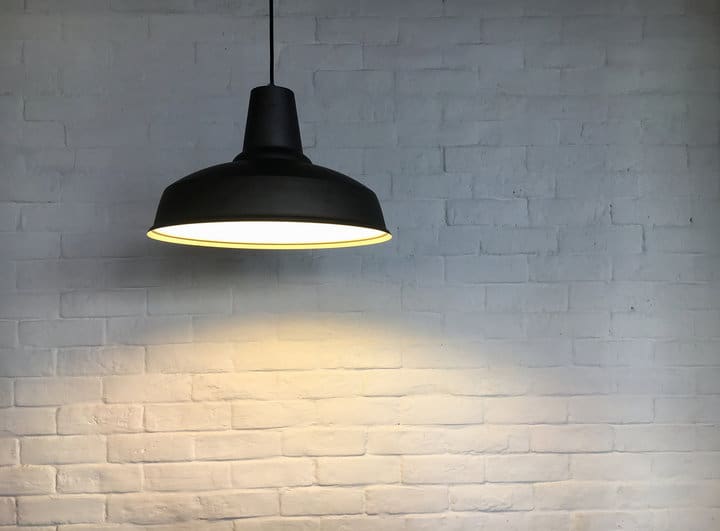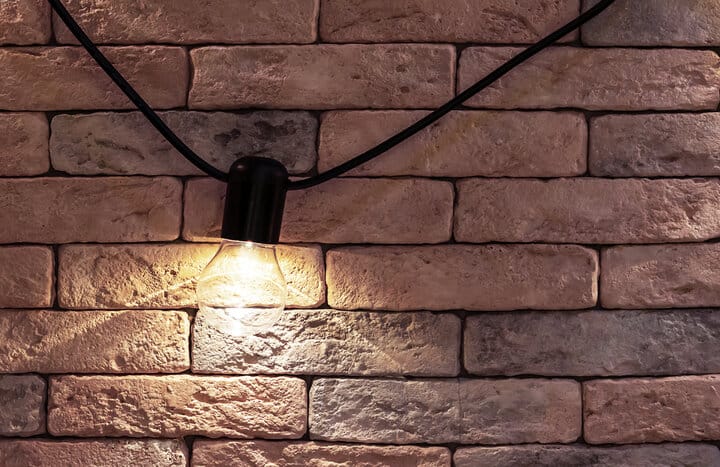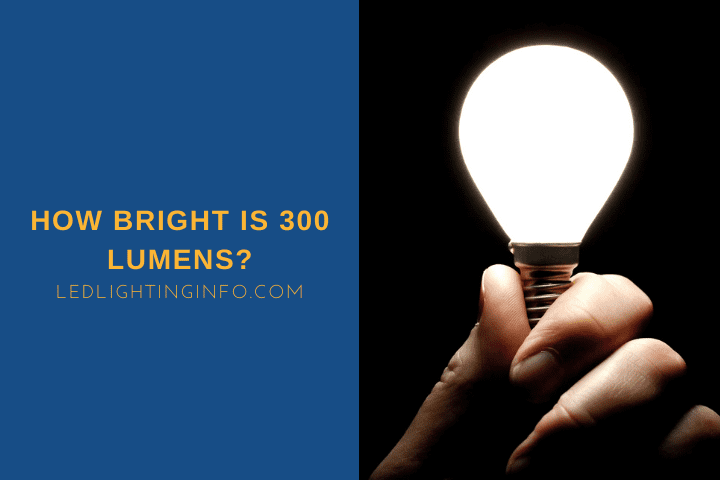The specs can be confusing if you’re not too familiar with lighting.
You have your watts, your watt-equivalents, your kelvins… there’s a lot of information and very different numbers.
One is lumens, and you might see a bulb advertised as 300 lumens.
But even if you know lumens refer to brightness, you might still need to learn the scale.
Is 300 bright? 300 seems like a considerable number.
One lumen is the same as the light of one candle – so 300 lumens is the same brightness as 300 candles. 300 lumens would be an appropriate brightness for an E12 candelabra bulb but not bright enough for a single E26 pendant light in most rooms.
To help give a clearer idea of what to expect from a 300-lumen light, let’s take a look at:
- Whether 300 lumens is considered bright
- How many watts is 300 lumens for an LED light
- The difference between lumens and lux
Is 300 Lumens Considered Bright?

Whether or not 300 lumens is considered bright depends on the context. Put a 300-lumen light inside a box, and it’ll be very bright!
Put one inside a warehouse, and not so much.
Typically, an E12 candelabra bulb will be between 250 and 350 lumens.
These bulbs are designed for spaces where you’ll either have multiple bulbs in one fixture – like a candelabra, obviously – or have a series of smaller fixtures along a wall.
A 300-lumen bulb is not considered bright enough to light up space on its own, but it could be a suitable choice for a table or floor lamp when combined with other light fixtures.
To help give some context, here’s a look at typical lights and the sort of lumens you should expect from them.
| Light source | Typical lumens |
|---|---|
| Indoor flashlight | 100-300 lumens |
| E12 candelabra bulb | 250-350 lumens |
| LED light strip | 450 lumens per foot |
| Outdoor flashlight | 400-1000 lumens |
| E26 Arbitrary (A) bulb | 800-1500 lumens |
| Garden/patio floodlight | 800-1500 lumens |
How Many Watts Is 300 Lumens LED?

There’s a simple way of converting lumens to watts and vice-versa with LED light bulbs.
It’s not an exact science though, and it only applies to typical LED bulbs you would use in indoor fixtures.
You can’t apply this to LED strip lights, or other bespoke lights.
Lumens and watts are inherently different things.
Watts relates to the electrical consumption of a device, while lumens are the output brightness.
They are not always going to be perfectly relatable.
Yet with the size of LED you get in most indoor household bulbs, you can make a reasonable assumption.
That is:
Watts X 60 = Lumens
So a 5-watt LED bulb will produce 300 lumens – or at least a close approximation. Conversely, an 800 lumens E26 bulb would use somewhere around 13 watts.
One thing that is absolutely key to remember when buying LED light bulbs is that you will see two different values on the box or in the product description when purchasing online – the actual wattage and the equivalent wattage.
The equivalent wattage is interesting because it tells you how many watts an older incandescent bulb would need to produce the same brightness.
So a 4-watt candelabra bulb might be a 30-watt equivalent, producing the same brightness as an old incandescent 30-watt candelabra bulb.
Again, let me be clear – the formula is an estimation.
So this equivalency is a guideline rather than a fact – there’s no way of saying that a 13-watt LED bulb will be exactly as bright as a 60-watt LED bulb.
But if you want to know approximately how bright an LED light bulb will be, multiply the actual wattage – not the equivalent wattage – by 60 and you’ll have a good idea.
What Is The Difference Between Lumen And Lux?

While it is useful to know the lumens of a light bulb, it’s much more useful to know the lux measurement – but that’s not something that depends solely on the bulb.
The difference between lumens and lux is that lumens relate solely to the brightness of the light at its source – AKA how bright the actual bulb is.
While lux is a measurement of how bright a surface is when illuminated by the bulb.
Lux will vary as it depends on the distance between the surface and the light source, and how widely dissipated the light is. One lux is the same as one lumen per square meter.
An easy way to illustrate this is with the torch on your smartphone.
That brightness stays consistent, but look at how it changes if you shine it on a wall from point-blank range, a 1-meter distance, or a 3-meter distance.
The lumens don’t change. However, the lux on the wall does.
It’s useful to know about lux because there are recommended lux levels for different rooms.
For a living room, you need between 100 and 300 lux, and for areas where you might use dangerous tools, like a kitchen, you’ll need more like 750 lux.
So let’s use a living room, and an average of 200 lux – how many 300 lumen bulbs do you need to properly light the space?
First, you can reverse engineer the total lumens because we know 1 lux is 1 lumen per square meter. So you need the square meterage of your room.
If the room is 4 meters by 4 meters, that’s a total square meter area of 16.
Now, multiply the lux by the lumens – 200 x 16 – for a total of 3,200 lumens needed.
Then you can work out that you need eleven 300-lumen light bulbs to properly light the space – as 11 x 300 would be 3,300, just above the recommended lumen level.
If you have 4 small candelabra spaced out around the room, each having space for 3 bulbs, that will make 300-lumen bulbs the perfect choice.
If you have a single pendant light fixture, more than 300-lumen bulbs are needed.
Even a typical E26 bulb with 800-1500 lumens won’t be sufficient – that’s where you’ll want to introduce lamps.
Final Words
300 lumens is not very bright when talking about typical indoor light bulbs, but that’s because 300-lumen bulbs aren’t designed to be used on their own.
They’re suitable for candelabra-style fixtures with multiple lights or, perhaps more commonly, for table and floor lamps, as additional lighting.
Have you used 300-lumen bulbs anywhere in your home for task lighting as a reading lamp or as part of a wider ambient lighting setup?
Have you ever mistakenly bought a 300-lumen bulb when you needed something much brighter?
Looking for an LED bulb but not sure what type you need?
Check out my free bulb picker and select the right bulb within few clicks.

